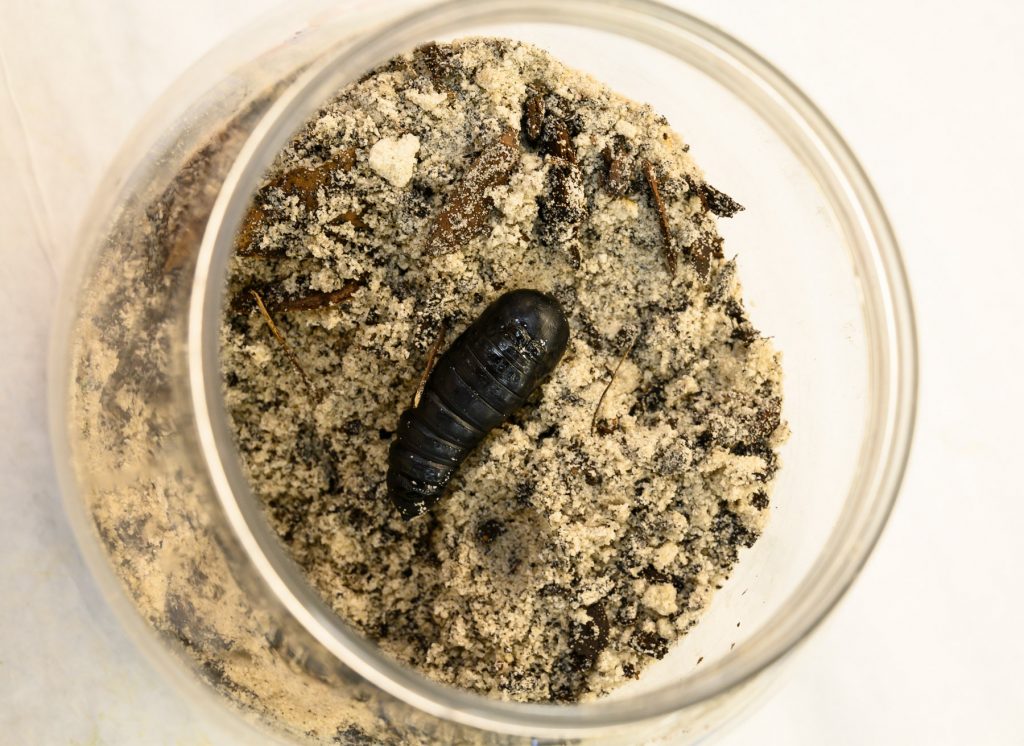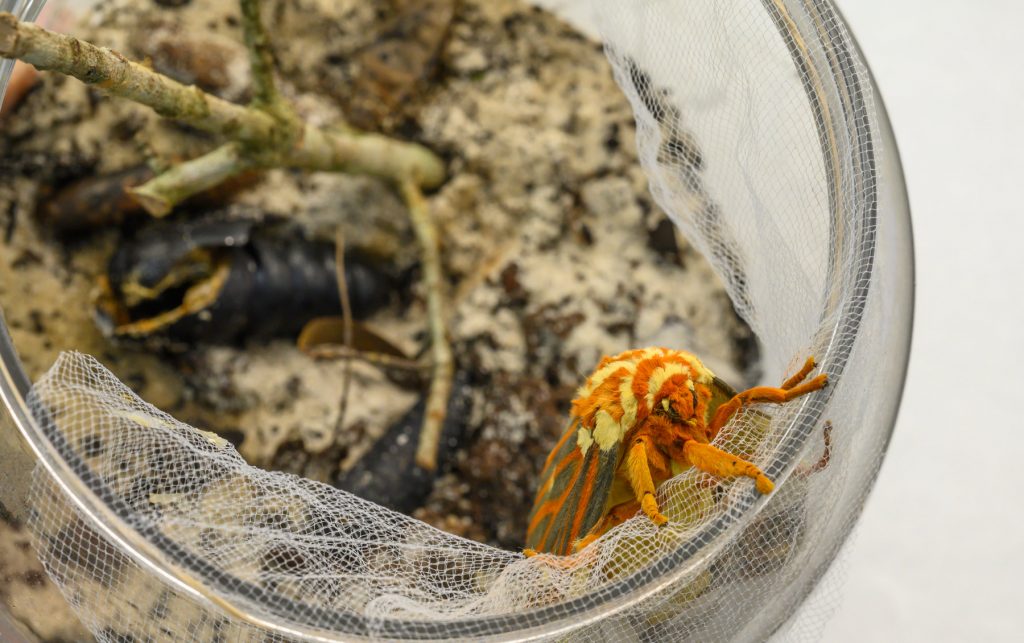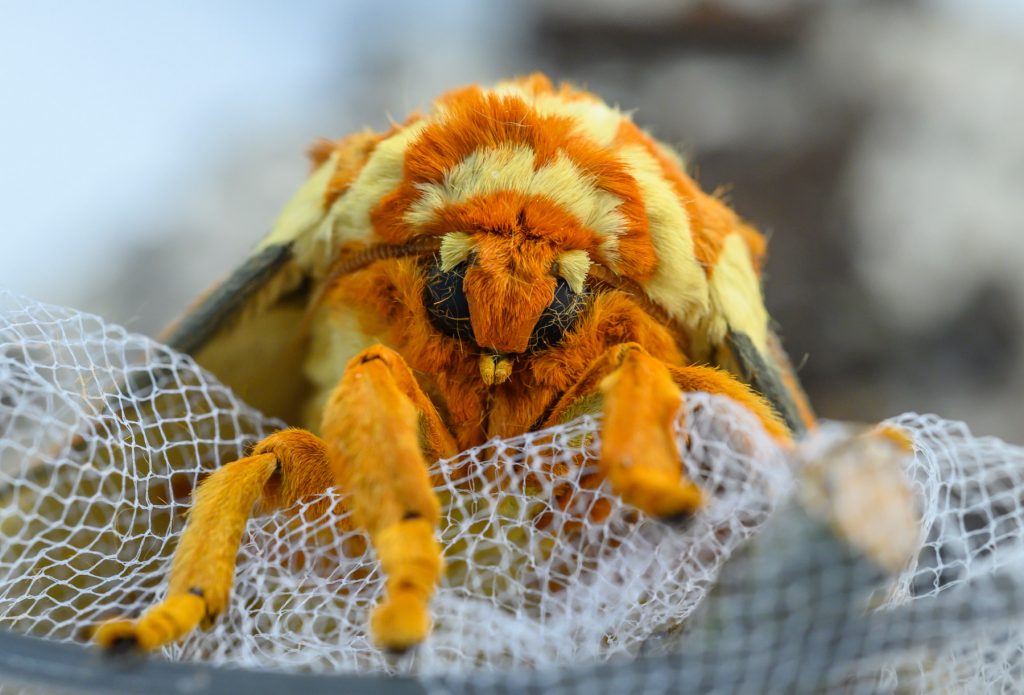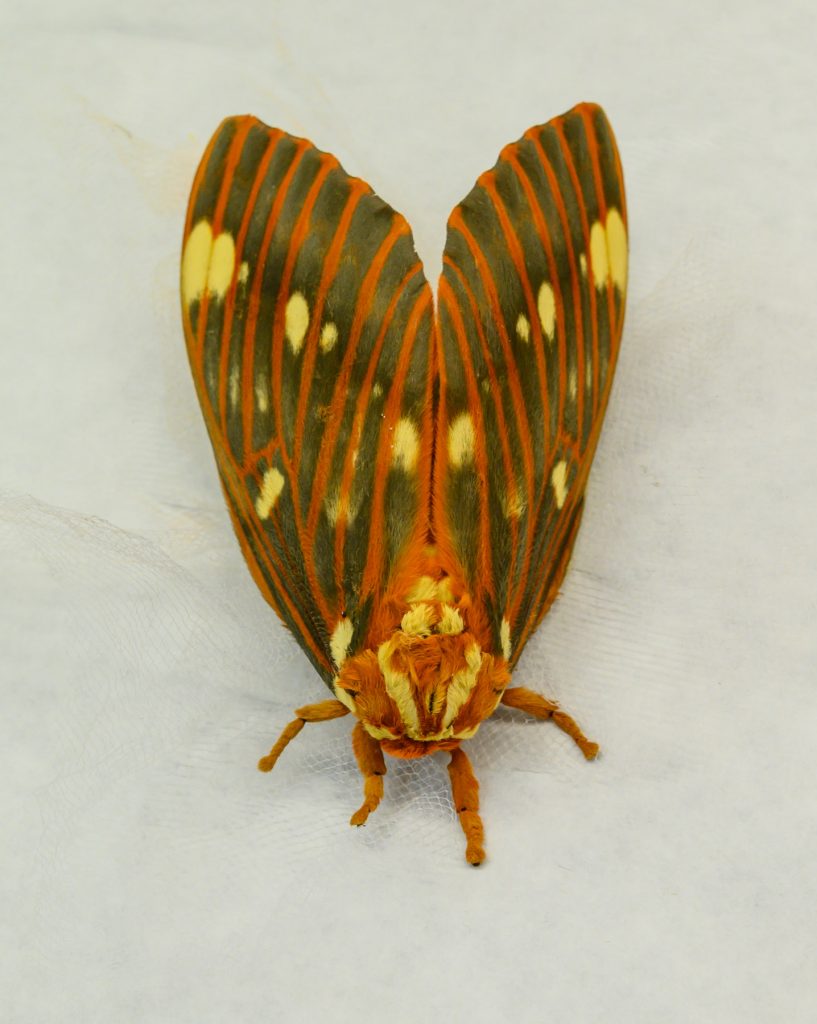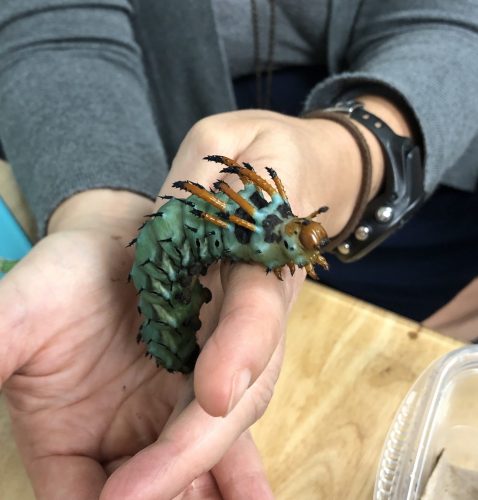
Hickory horned devils look fierce, but they’re just the caterpillar stage of a beautiful moth.
A few weeks ago, a Florida Museum visitor brought this one to us because she found it in her backyard and wasn’t sure what to do with it. After one of our scientists checked it out, and staff took a few casual pictures, we relocated the caterpillar to an appropriate tree to complete its life cycle.
Our pictures on social media were such a hit that we decided to watch closer and keep everyone updated on this caterpillar’s metamorphosis. Hickory horned devils pupate in soil, so we provided a nice spot for it to settle where we could keep an eye on it. We knew we could be watching it for two weeks or for many months!
Now that it’s National Moth Week, July 20-28, 2019, it was incredibly impeccable timing for our hickory horned devil to emerge as an adult. How perfect was that?
Citheronia regalis is called a hickory horned devil as a caterpillar, when it feeds on hickory, sweetgum or sumac trees. As an adult, it’s called a regal moth or royal walnut moth. The moths and caterpillars are found throughout the deciduous forests of the eastern U.S. from New Jersey to Missouri and southward to eastern Texas and Central Florida. This is one of North America’s largest and most spectacular moths, as you can see!
After a few glamour shots of our fuzzy regal moth, she was relocated to a good place outside the Museum to continue her life cycle.
